As an oppressed minority and rootless for centuries, Jews went from place to place seeking temporary refuge until living conditions became intolerable.
Intolerance and indifference catalyzed Zionism into a national movement. In the 19th and 20th centuries antisemitism reached historic levels in Europe and in Middle Eastern Muslim lands, further propelling the Jewish quest for a state. Jews repeatedly asked the question “Do we go, or do we stay?” It became as common as observing the Jewish calendar. For Zionism to succeed, it required an educated population capable of building and sustaining a state.
Most Jews did not choose Zionism, so the state evolved slowly during the first half of the 20th century. Waves of immigrants came in bursts from Eastern and Western Europe, Middle Eastern countries, Russia, and Ethiopia. Absorbing immigrants to shape a national center was always a national chore as the state became a haven for Jews in need and in crisis. In 1882, barely 24,000 Jews lived in Palestine. When the state was established in 1948, 650,000 Jews lived in Palestine. In 2024, the Israeli population exceeded 9 million, including Israeli Arabs (23% of the total). Israeli Jews in 2025 account for nearly half the world’s Jewish population.

By Scott Abramson and Ken Stein In his famous 2004 essay “Between Right and Right,” Israel’s most celebrated novelist, Amos Oz, reflects on Israeli society, summing up his fellow citizens with this appraisal: “What we,…

With intentioned ambiguity, Britain asserted that its goal in Palestine was not to make it wholly Jewish or subordinate the Arab population. Self-determination was not promised. Britain wanted to remain ‘umpire’ between the communities. Naively it thought it could control communal expectations and keep the peace.
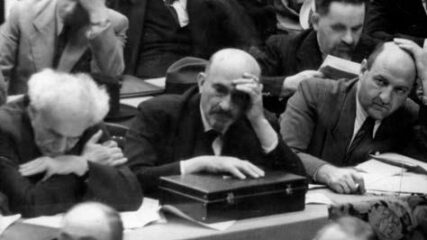
Zionist leaders—David Ben-Gurion, Chaim Weizmann and Eliezer Kaplan—learning of the British intent to limit severely the Jewish national home’s growth. Increasingly, they are also aware of the German government’s hostilities towards European Jewry.

Jews worldwide are given the right to come to Israel and become citizens.

By Scott Abramson and Ken Stein, April 4, 2025 The Exile and the Homeland It may be said that the Jewish people’s entire cosmology (the origin and nature of the universe) from their birth as…

Updated August 8, 2025, with a new introduction The Jewish National Fund (JNF), or Keren Kayemet L’Yisrael (KKL), was founded in 1901 after the Fifth Zionist Congress. The goal of the fund was to raise…
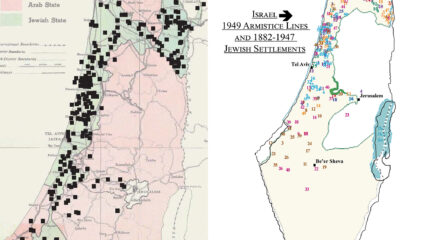
By Ken Stein and Scott Abramson, March 23, 2025 Zionist/Jewish Economic Development in Palestine Before 1948 Jewish physical growth in Mandatory Palestine in the period known as the New Yishuv was sufficient through land acquired…
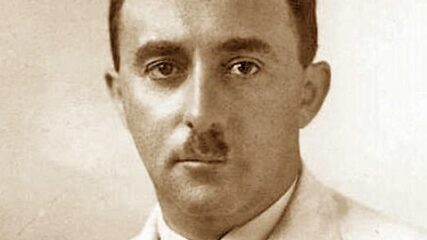
Moshe Sharett urges the British and Americans to open Palestine to unimpeded Jewish immigration from Europe.

Emory Professor of Contemporary and Middle Eastern History, Political Science, and Israeli Studies and Center for Israel Education President Ken Stein outlines the history of Zionism and the British Mandate at the CIE 2018 Educator Enrichment Workshop.

In a 40-minute video recorded June 14, 2021, Dr. Yaron Ayalon of the College of Charleston and Rich Walter of the Jewish Federation of Greater Atlanta delve into the history and the political and cultural…

Dance along as waves of Jewish immigration mix with indigenous traditions to create a unique culture reflecting a world of Jewish and non-Jewish influences across Israel’s diverse society.
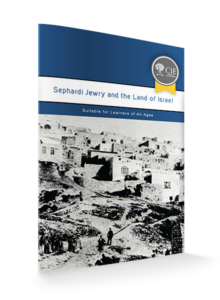
E-book
Join special guest curriculum contributor Dr. Yaron Ayalon and the CIE Curriculum team as they take you and your students on a riveting adventure through the lives of the Sephardi and Mizrahi Jews of Southern Europe and the Middle East. Explore the differences between Sephardi and Ashkenazi cultures, and discover the great wealth of knowledge and spirituality of the Sephardi Jews. Utilizing maps, photographs, primary documents, an extensive timeline and even a recipe for a traditional Sephardi dish, this book is the perfect introduction to Sephardi Jewry for the individual learner or in a classroom setting.
- Suitable for learners 9th grade and up
- Maps, Photographs, Primary Documents, Extensive Timeline
- Perfect for individuals, groups and classes
- Develop an understanding of the differences between Sephardi and Ashkenazi Jewry
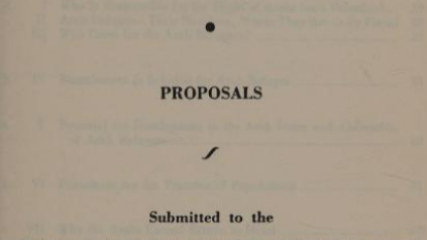
This report submitted to the United Nations at the end of 1951 notes that “some one million Jews have become the victims of accelerated antiSemitism” since 1948 in the Muslim countries of the Arab League and North Africa, “communities which have existed for thousands of years.” The report analyzes the situation for Jews overall and explains restrictions and oppressive measures country by country.

Read full article at the Israel State Archives.
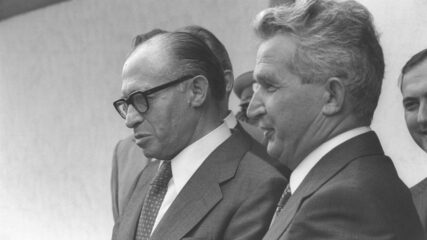
Unknown to the Carter administration and one month before it issued the US-Soviet Declaration to convene an international Middle East Peace Conference, Prime Minister Begin tells the cabinet that he learned from the Rumanian president that Sadat wishes to have Israeli and Egyptian representatives meet in secret talks. That bi-lateral Dayan -Tuhami meeting takes place on September 16. Begin refers to advanced drafts of proposed treaties between Israel and each Arab state; he presents details about Rumanian Jewish immigration to Israel.

Noah Lewin-Epstein and Yinon Cohen, “Ethnic Origin and Identity in the Jewish Population of Israel,” Journal of Ethnic and Migration Studies (June 2018). The multifaceted ethnicity in the Jewish population of Israel is addressed by…















